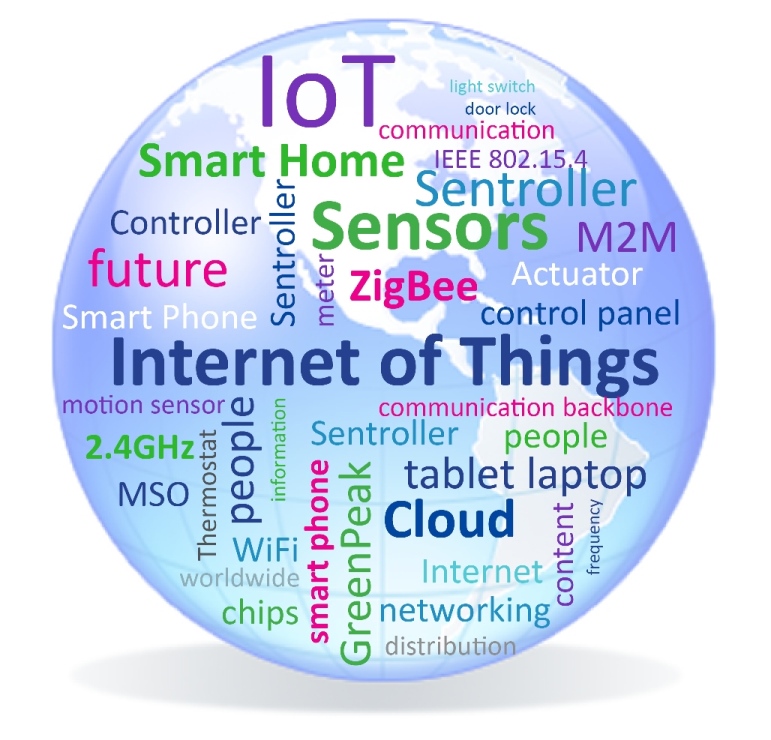|
September 2013
Interview
AutomatedBuildings.com
|
[an error occurred while processing this directive]
(Click
Message to Learn More)
|
 EMAIL
INTERVIEW
– Elly Schietse and Ken Sinclair
EMAIL
INTERVIEW
– Elly Schietse and Ken Sinclair
Elly
Schietse, General Manager, GreenPeak Belgium
Elly Schiatse oversees and directs marketing
operations, customer relations and quality control for GreenPeak
worldwide.
GreenPeak Technologies is a fabless
semiconductor company and is a leader in ZigBee silicon solutions for
the smart home. GreenPeak is privately funded. It is headquartered in
Utrecht, The Netherlands and has offices in Belgium, USA, Japan and
Korea. GreenPeak has won the
prestigious 2012 Red Herring Top 100 Europe award and is recognized as
a leader in developing new wireless technologies for consumer
electronics and smart home applications, demonstrating rapid growth and
adoption by major customers.
For more information, please visit www.greenpeak.com
ZigBee and the Smart Home
A single room could have multiple sensors – temperature, security,
motion, lighting, etc., all connected by a central box which then talks
to the local appliances as well as to the internet, allowing monitoring
and control by web connected devices.
Sinclair:
What is ZigBee?
Schietse:
ZigBee is the mature internationally recognized wireless connectivity
and networking industry standard to connect sentrollers - sensors,
controllers and actuator devices. Very similar to WiFi regarding
operating frequency (2.4 GHz), range, transmission, robustness,
resistance to interference, and security protocols, it is instead a low
data rate technology that is targeted to devices and systems that
require very small amounts of data to be transmitted. Because of the
low data rate, power requirements are minimal.
Depending on the application, a ZigBee radio draws so little power that
its battery never needs to be changed or re-charged over the life of
the device. In some applications, no power is needed at all to operate
the ZigBee radio. For instance, in applications like light switches,
the actual motion of flipping a light switch generates enough energy to
enable its switch’s ZigBee radio to send a signal across the room to an
individual light, making it turn on or off. The light switch’s ZigBee
radio can also connect to a central control unit, router or a set top
box, that in turn uses ZigBee to control a network of lights or other
applications.
Sinclair:
What are the benefits of ZigBee
Open wireless standard (vs. proprietary)
Schietse:
Wireless sensor applications prosper best within the sphere of industry
standards. Standards offer OEMs the freedom to purchase from a larger
pool of suppliers and most importantly, standards allow devices from
different vendors to interoperate, a feature which is paramount in
applications ranging from building automation to industrial automation.
The first open standard for wireless sensor applications is covered by
IEEE 802.15.4. The IEEE standard 802.15.4 intends to offer the
fundamental lower
network layers of a type of wireless personal area network which
focuses on low-cost, low-speed ubiquitous communication between devices.
On the next communication layer, the ZigBee standard, offers a superior
solution for the rapidly evolving and growing Smart Home and Internet
of Things market.

The ZigBee Alliance is an organization with more than 400 members that
maintains and publishes the ZigBee standard for wireless communication
for a wide variety of application domains (home, consumer, smart
energy/grid, building automation, retail automation, and several
others). All these ZigBee protocols have one element in common – they
all use the same underlying radio technology, all use the same 2.4GHz
frequency band worldwide, and all comply with worldwide radio
certification rules.
There are also pseudo-standards that essentially are proprietary,
regional solutions disguised by the user community as an open platform,
where essentially there is just a single provider behind the technology.
In short, large technology and consumer electronics companies want:
- Worldwide solutions, as they are loath to developing/certifying
different products (and different SKUs) for different regions in the
world.
- Open standards with multiple chip and technology providers, to
guarantee lowest cost and continuity of supply, avoiding the
single-source trap.
Sinclair:
What is the potential of the
ZigBee & Smart Home market?
Schietse:
The Smart Home market addresses a multi-billion market potential.
Today, every household which is connected to the internet easily counts
10 or more WiFi modules (think of routers, tablets, laptops, games,
smart phones, TVs, cameras, etc.).
As ZigBee is the low-power standard protocol that we expect to be found
in the future in every home for connecting sentrollers: sensors and
controllers like thermostats, light switches, motion detectors,
electronic door locks, window sensors, portable health monitors, etc.,
there easily could one hundred or more ZigBee sensors in a large home
and grounds. A single room could have multiple sensors – temperature,
security, motion, lighting, etc., all connected by a central box which
then talks to the local appliances as well as to the internet, allowing
monitoring and control by web connected devices.
Sinclair:
What is a sentroller?
Schietse:
“Sentroller” is the combination of the words sensor and controller.
Sentrollers are essentially already around us today in the form of
thermostats, light switches, motion detectors, door locks, actuators,
light fixtures, etc.
We define the sentroller as either a
sensor (temperature, motion,
light, etc.), a controller (local remote control or web connected
device) that enables monitoring and control of the system, and/or an
actuator that physically controls the actual end point device. An
actuator is utilized to turn on and off a light in a lamp, to turn on
the HVAC, to slide a lock in a window, to turn off the water in a
building if a leak is detected. Actuators control the operation
of device or an appliance. All three components (sensors, controllers
and actuators) are included within the sentroller product description.
Currently most of these devices are
already available on the market but
function as stand-alone solutions fitting a specific purpose. With
small exceptions, they don’t interconnect – there is a not a single
unified control panel or online dashboard where the user can monitor
and control all of these various devices and systems.
However, by using ZigBee that connects
these sentrollers to a central
control box, they can then be connected to the internet, where the
entire network of sensors and actuators can be monitored and controlled
with smart phones and other web connected devices. In many cases, these
will evolve to “Really Smart Buildings” where the intelligence lives in
the cloud and does not require a human to intervene.
For example, after a building closes for
the night and everyone goes
home, a series of sensors could scan all doors and windows to make sure
that they are all locked and secure. If a window is left open, the
system would automatically activate the window controllers and close
the window without a human having to make that decision.
We may expect in the near future that
our buildings will show a
consistent integrated behavior for all these devices. This will pave
the way for a new way of living, with increased security, comfort, and
increasingly capable of managing our energy consumption.
[an error occurred while processing this directive]Sinclair:
How will the Smart Home connect to
the Internet of Things & ZigBee
in industrial automation or commercial building automation?
Schietse:
Within the next few years, there will be an explosive growth in the
number of Smart Home devices in every home that will be connected to
the internet. Just like WiFi started in the home, ZigBee will start in
the home as well and will then move into commercial building
automation, facility management, transportation and industry automation
to connect users and devices worldwide in a diverse variety of ways and
further auto-manage industrial systems and even urban areas.
We will see a shift to intelligent
automation with ubiquitous,
always-on intelligent sentrollers that keep systems and services
running smoothly, everywhere around us and move from islands of
sentrolled areas (the Smart Home) to a totally integrated and
interlinked Internet of Things.
The Internet of Things is not limited to the Home, however. We expect
to see smart sentroller networks in offices, campuses and industrial
buildings like warehouses and factory floors.
Sinclair:
Why GreenPeak? What does GreenPeak
provide?
Schietse:
There are many developers and manufacturers of ZigBee chips for a wide
range of applications.
However, GreenPeak is the leader in the development of ZigBee
technologies and radio chips for the Smart Home and the Internet of
Things. With over 20 years of experience in wireless networking
technologies (GreenPeak’s engineers created and developed WiFi),
GreenPeak’s ZigBee chips lead in the industry, providing unique
differentiators for Smart Home applications. GreenPeak chips offer
superior performance and range to cover a full home. In addition to
offering market leading robustness against WiFi interference,
GreenPeak’s chip have ultra low power requirements, allowing
devices to work on a single coincell battery for more than 10 years. It
is the combination of these specifications that makes the
difference in Smart Home applications.
footer
[an error occurred while processing this directive]
[Click Banner To Learn More]
[Home Page] [The
Automator] [About] [Subscribe
] [Contact
Us]
 EMAIL
INTERVIEW
– Elly Schietse and Ken Sinclair
EMAIL
INTERVIEW
– Elly Schietse and Ken Sinclair EMAIL
INTERVIEW
– Elly Schietse and Ken Sinclair
EMAIL
INTERVIEW
– Elly Schietse and Ken Sinclair